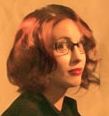Being a professional writer is not an easy career path for most of us, according to Cory Doctorow, John Scalzi and George Ivanoff in a discussion at AussieCon4 in Melbourne.
George advised the audience that to write for a wide range of genres can help create opportunities. He said the education market can be well paid, if you have the interest and knowledge.
John is a freelance writer and uses his skills for both fiction and non-fiction. He added that the corporate market can be a great balance for a creative writer, especially as his creativity is “about three hours a day”. His two streams of work for Tor and Subterranean are complementary rather than “either/or”.
Cory describes himself as a “freelance entrepreneur” rather than a writer, although his SF and speculative fiction is increasingly well-known and award-winning. Some advice to budding writers is that trade publishing is not profitable to many except the big stars, so a well-paid job may be a better option while a writer enjoys a part-time craft.
Piracy was considered “small-time” by Cory. The three big players – Sony, Apple and Amazon – over time will become almost universally accepted, he said, and all easier to use than torrents.
AussieCon4 was the 68th World Science Fiction Convention, held in Melbourne, Australia, Sept 2nd-6th 2010. The panel discussions included SF, fantasy, speculative fiction, steampunk, movies, comics and fandom.






















